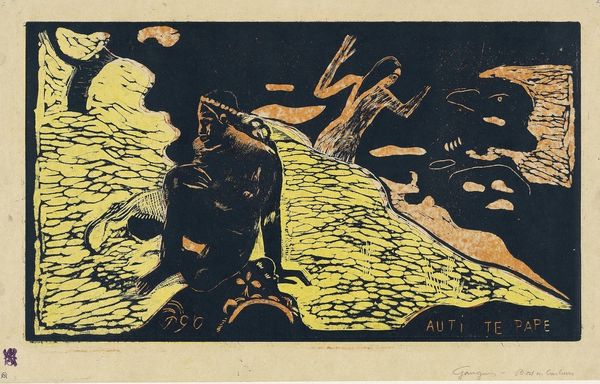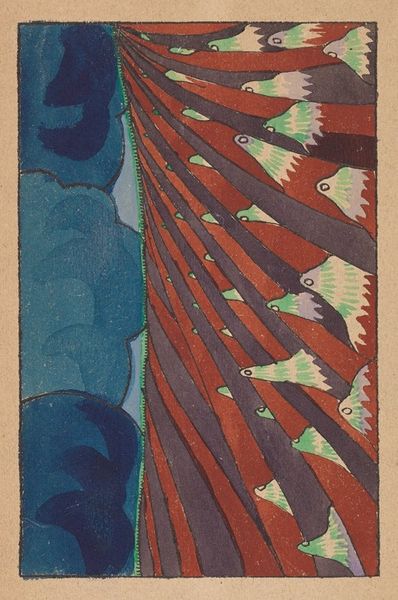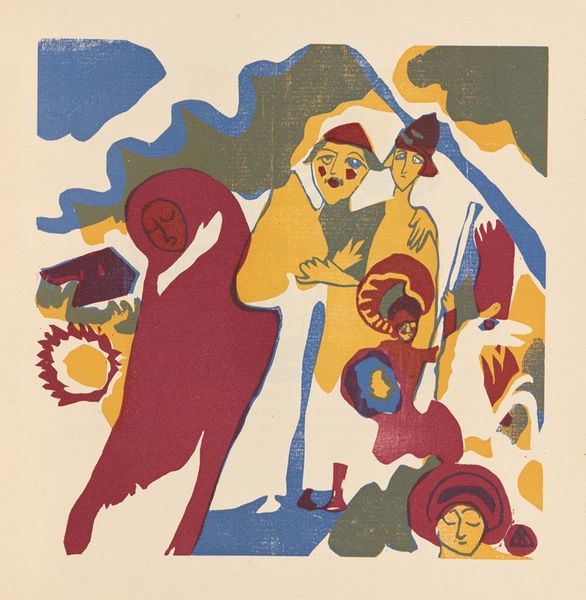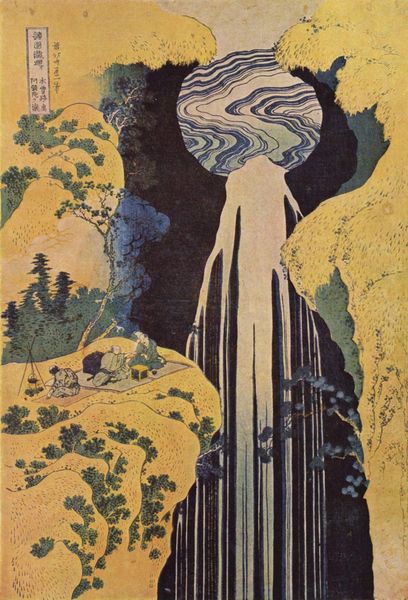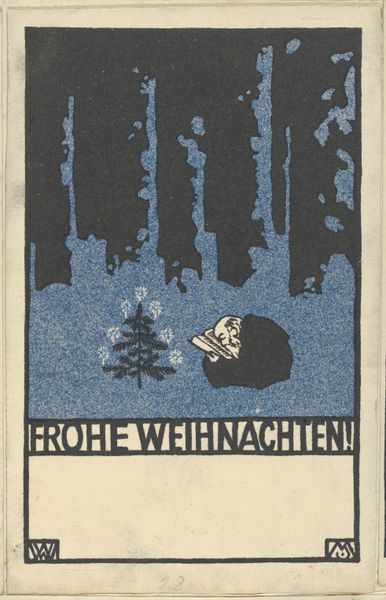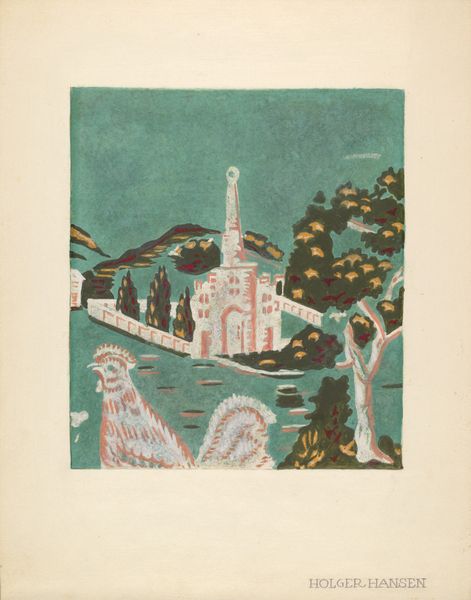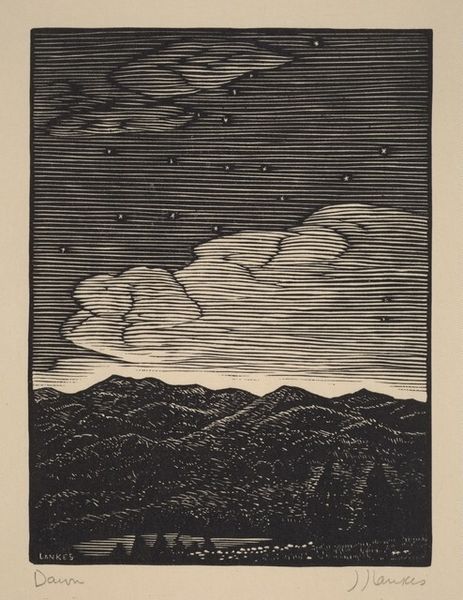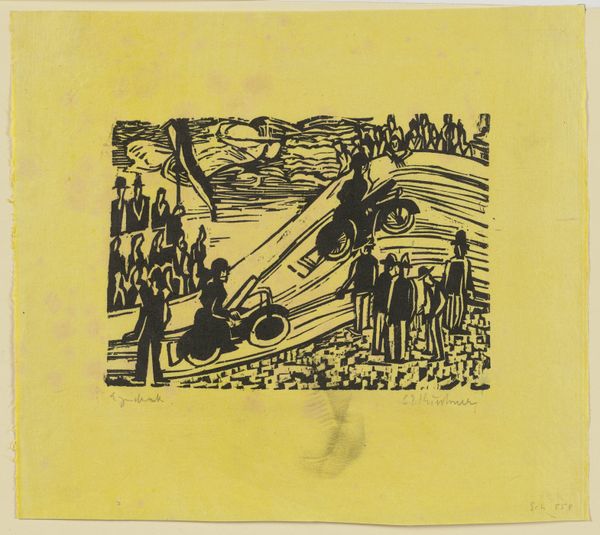
print, woodcut
# print
#
landscape
#
german-expressionism
#
figuration
#
abstract
#
geometric
#
expressionism
#
woodcut
#
line
Copyright: Public Domain: Artvee
Editor: We're looking at Wassily Kandinsky's "Klänge Pl.23," a woodcut print from 1913. There's almost a stage-like quality to the composition, and the colors are really striking, especially the greens and blues. What do you see in this piece? Curator: I see a conscious breaking down of artistic hierarchies. Kandinsky, through the medium of the woodcut, traditionally a more 'craft-based' form, elevates it to fine art. Consider the labor involved – the physical carving of the wood, the precise application of ink, the printing process itself. Editor: So you're focusing on the *how* more than the *what*? Curator: Precisely. It’s not just about representing a scene. It's about the act of creation and how that influences the meaning. Think about the social context. 1913 was a time of massive industrial change and shifting social structures. The Expressionists often embraced simpler methods in defiance of the cold industrialization. Do you see that resistance in the roughness of the printmaking? Editor: I do now. It’s like the imperfections become part of the statement. There's also a sense of accessibility by embracing the less expensive print form. Curator: Exactly! Kandinsky democratizes artmaking and art consumption, allowing it to become accessible outside elite circles. Consider the very notion of 'Klänge' - sounds. How does the choice of such a supposedly crude method enable or distort the visual representation of sound and space? Editor: I never considered how the *materiality* influenced the ‘sound’ he’s trying to represent. It gives me a lot to consider when viewing abstract art. Curator: Indeed. By exploring the material processes and social context of art, we gain a far richer understanding of its purpose and meaning.
Comments
No comments
Be the first to comment and join the conversation on the ultimate creative platform.
